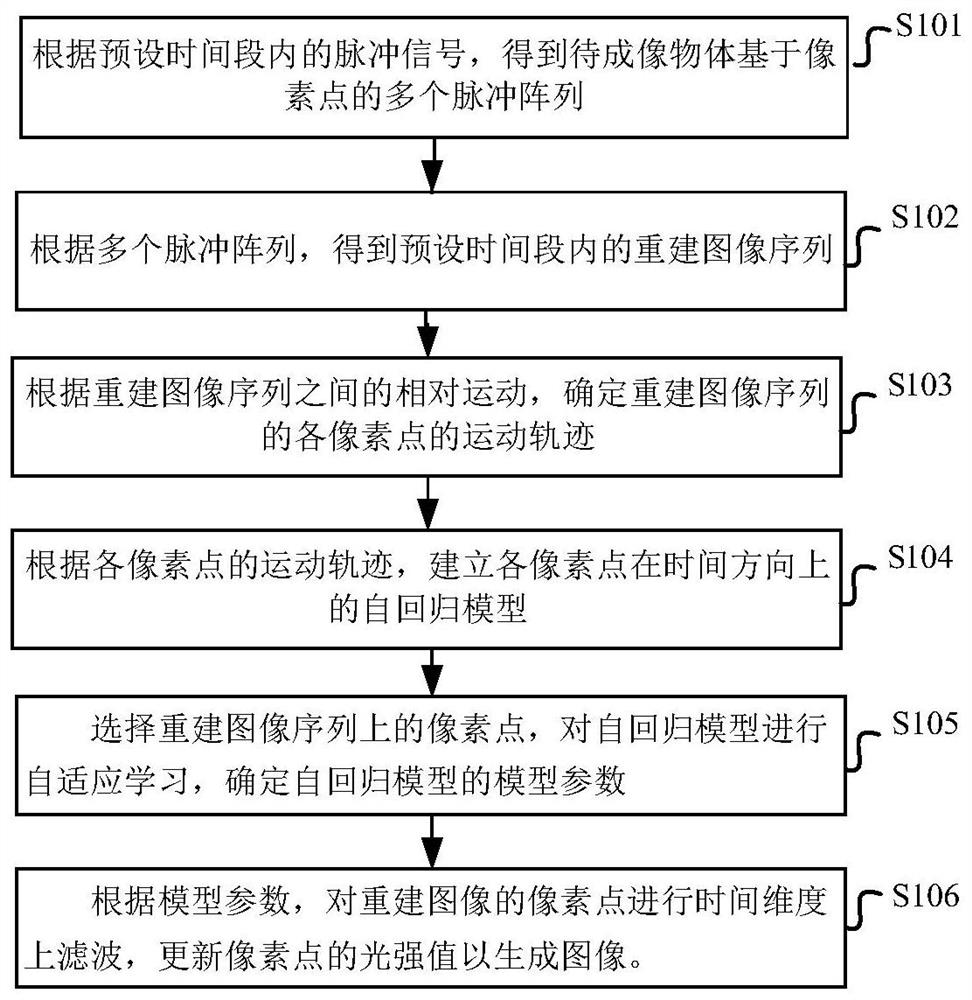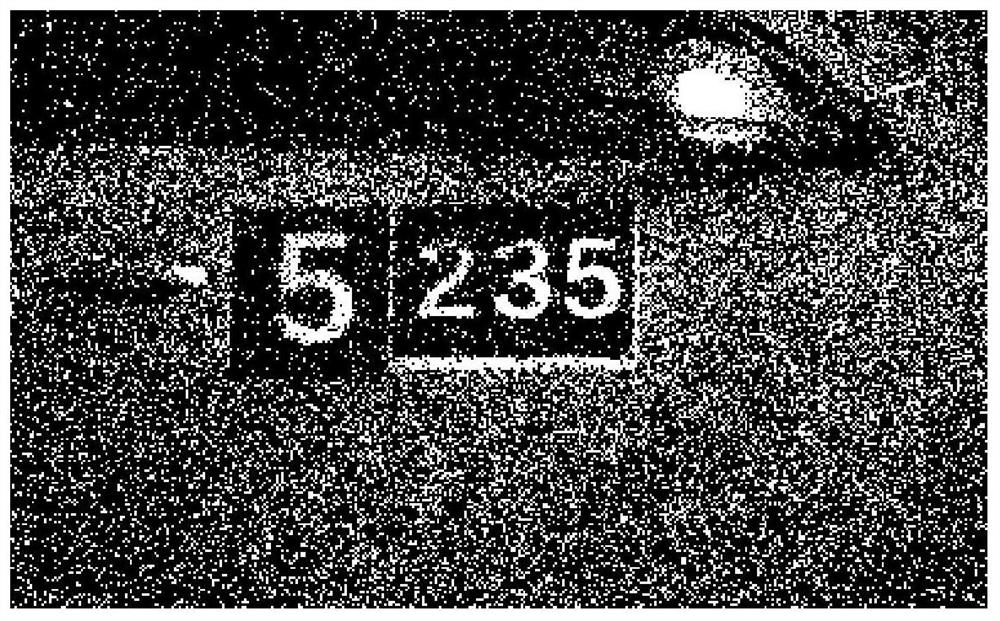Pulse signal-based adaptive imaging method, system and computer medium
A technology of pulse signal and imaging method, applied in computing, 2D image generation, image enhancement and other directions, can solve the problems of low signal-to-noise ratio and motion blur, achieve high signal-to-noise ratio, improve visual effects, and improve clarity. Effect
- Summary
- Abstract
- Description
- Claims
- Application Information
AI Technical Summary
Problems solved by technology
Method used
Image
Examples
Embodiment 1
[0051] figure 1 A schematic diagram of the steps of the weight-based electric control movement method according to the embodiment of the present application is shown in .
[0052] Such as figure 1 As shown, the pulse signal-based adaptive imaging method of the embodiment of the present application specifically includes the following steps:
[0053] S101: Obtain multiple pixel-based pulse arrays of an object to be imaged according to pulse signals within a preset time period.
[0054] S102: Obtain a reconstructed image sequence within a preset time period according to the plurality of pulse arrays.
[0055] Wherein, according to the multiple pulse arrays, obtaining the reconstructed image sequence within a preset time period specifically includes: reconstructing the reconstructed image sequence by using a pulse interval algorithm.
[0056] S103: Determine the motion track of each pixel in the reconstructed image sequence according to the relative motion between the reconstru...
Embodiment 2
[0094] This embodiment provides an adaptive imaging system based on pulse signals. For details not disclosed in the adaptive imaging system based on pulse signals in this embodiment, please refer to the adaptive imaging methods based on pulse signals in other embodiments specific implementation content.
[0095] Figure 5 A schematic structural diagram of an adaptive imaging system based on a pulse signal according to an embodiment of the present application is shown in .
[0096] Such as Figure 5 As shown, the pulse signal-based adaptive imaging system of the embodiment of the present application specifically includes a pulse unit 10, an image reconstruction unit 20, a motion trajectory unit 30, an autoregressive model unit 40, a model parameter calculation unit 50, and an adaptive imaging unit 60 .
[0097] The pulse unit 10 is configured to obtain multiple pixel-based pulse arrays of the object to be imaged according to the pulse signal within a preset time period;
[...
Embodiment 3
[0119] This embodiment provides an adaptive imaging device based on a pulse signal. For details not disclosed in the adaptive imaging device based on a pulse signal in this embodiment, please refer to the adaptive imaging method based on a pulse signal in other embodiments Or the specific implementation content of the system.
[0120] Figure 6 A schematic structural diagram of an adaptive imaging device 400 based on a pulse signal according to an embodiment of the present application is shown in .
[0121] Such as Figure 6 As shown, the adaptive imaging device 400 includes:
[0122] Memory 402: for storing executable instructions; and
[0123] Processor 401: used to connect with memory 402 to execute executable instructions so as to complete the pulse signal-based adaptive imaging method.
[0124] Those skilled in the art can understand that the Figure 6 It is only an example of the adaptive imaging device 400, and does not constitute a limitation to the adaptive imagi...
PUM
 Login to View More
Login to View More Abstract
Description
Claims
Application Information
 Login to View More
Login to View More - R&D
- Intellectual Property
- Life Sciences
- Materials
- Tech Scout
- Unparalleled Data Quality
- Higher Quality Content
- 60% Fewer Hallucinations
Browse by: Latest US Patents, China's latest patents, Technical Efficacy Thesaurus, Application Domain, Technology Topic, Popular Technical Reports.
© 2025 PatSnap. All rights reserved.Legal|Privacy policy|Modern Slavery Act Transparency Statement|Sitemap|About US| Contact US: help@patsnap.com



